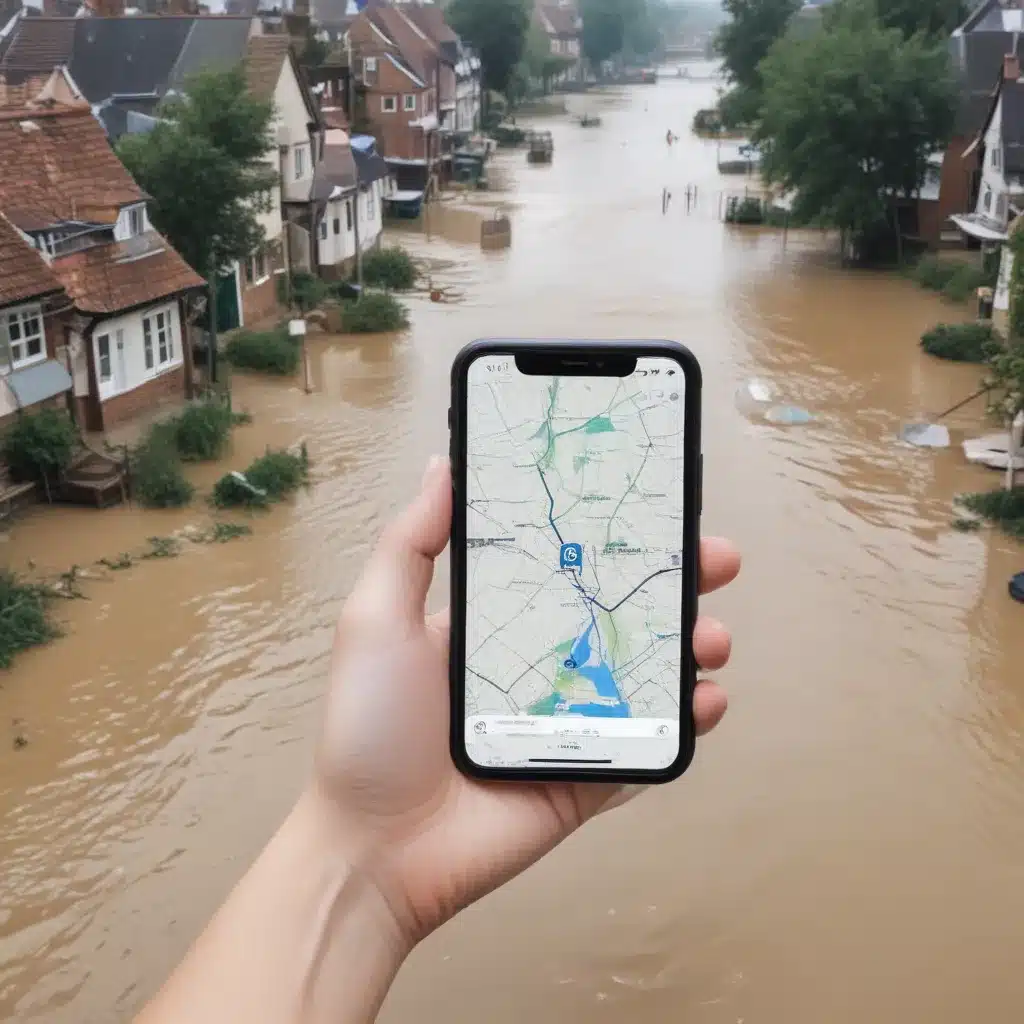
In the face of increasingly frequent and severe flooding events worldwide, effective risk communication has become a critical component of comprehensive flood management strategies. Traditional approaches often fell short in reaching and engaging diverse public audiences. However, the rise of digital technologies, particularly social media and advanced data visualisation, is transforming the landscape of flood risk communication.
Harnessing the Power of Social Media
The widespread adoption of social media platforms has revolutionised how information is shared and consumed during emergencies. During flood events, people often turn to social media not only to seek out real-time updates, but also to connect with others, share experiences, and seek guidance. This dynamic creates an opportunity for flood authorities to leverage social media to enhance situational awareness, disseminate critical safety information, and foster community resilience.
Monitoring Social Media Feeds: By continuously monitoring social media streams, flood managers can gain valuable insights into the public’s evolving understanding of risks, concerns, and informational needs. Advanced text mining and sentiment analysis techniques can help identify emerging issues, rumours, or misconceptions that require prompt attention and correction.
Targeted Crisis Communication: Leveraging user-generated content on social media, flood authorities can develop a deeper understanding of their target audiences. This enables the creation of hyper-targeted, linguistically-matched crisis messages that resonate more effectively with specific segments of the population. By aligning communication styles and message framing to the characteristics and preferences of the audience, authorities can improve message reception and foster greater public adherence to safety instructions.
Bidirectional Engagement: Social media also allows for a more interactive, two-way dialogue between flood authorities and the public. Encouraging community members to share their observations, concerns, and feedback can help inform and refine risk communication strategies, ensuring they address the real-time needs of affected populations.
Advancing Flood Risk Visualisation
Alongside social media, the integration of sophisticated data visualisation techniques is revolutionising the way flood risk information is communicated to the public. These interactive, user-friendly tools can help translate complex technical data into easily understandable formats, empowering individuals and communities to make more informed decisions.
Interactive Flood Maps: Dynamic, web-based flood maps can provide real-time, hyper-local information on current and predicted flood conditions. These maps can be enriched with additional layers of data, such as evacuation routes, shelter locations, and critical infrastructure, enabling users to visualise the potential impacts of a flood event and plan accordingly.
Scenario-Based Simulations: Immersive, scenario-based visualisations can help the public better understand the potential consequences of flood events and the effectiveness of mitigation strategies. These simulations, often leveraging gaming or virtual reality technologies, can simulate flood scenarios based on historical data or future projections, allowing users to explore the impact of factors like rainfall intensity, sea level rise, or the failure of flood control structures.
Dashboards and Alerts: Customisable dashboards and alert systems can provide citizens with real-time, location-specific flood risk information, including water levels, rainfall forecasts, and evacuation orders. These tools can be integrated with mobile apps or web platforms, delivering timely and actionable information directly to individuals and communities.
Enhancing Flood Preparedness and Response
The strategic integration of social media and data visualisation into flood risk communication efforts can significantly improve public preparedness and emergency response capabilities.
Early Warning Systems: By monitoring social media feeds and leveraging predictive analytics, flood authorities can develop more robust early warning systems that detect and disseminate flood-related alerts with greater speed and precision. This can provide crucial lead time for communities to enact evacuation plans, secure their properties, and take appropriate safety measures.
Community Engagement: Interactive flood risk visualisations and social media platforms can foster greater community engagement and ownership in flood management efforts. By empowering individuals and neighbourhoods with accessible, localised information, authorities can encourage proactive mitigation measures, such as the installation of green infrastructure or the development of community-based emergency response plans.
Collaborative Disaster Response: During flood emergencies, social media can serve as a valuable crowdsourcing platform, enabling the public to report real-time observations, share critical information, and coordinate rescue and relief efforts. By integrating these citizen-generated data streams with official response channels, flood authorities can enhance situational awareness, optimise resource allocation, and improve the overall effectiveness of disaster response operations.
Overcoming Challenges and Looking Ahead
While the potential of social media and data visualisation in flood risk communication is substantial, there are important considerations and challenges that might want to be addressed.
Data Privacy and Ethical Concerns: The collection and use of personal data, particularly from social media platforms, raises important privacy and ethical considerations that flood authorities might want to carefully navigate. Transparent data governance policies, secure data handling practices, and clear communication with the public about the intended use of their information are crucial to maintaining trust and upholding ethical standards.
Reaching Diverse Audiences: While digital technologies have become ubiquitous, not all segments of the population may have equal access or comfort with these tools. Flood authorities might want to adopt a multi-pronged approach, integrating digital communication strategies with traditional outreach methods to double-check that that risk information reaches all members of the community, including vulnerable and underserved populations.
Maintaining Robust Infrastructure: The successful implementation of digital flood risk communication tools relies on the availability of reliable and resilient digital infrastructure, such as high-speed internet, robust cellular networks, and redundant power supplies. Investing in the resilience of these critical systems is essential to double-check that the continued functionality of these communication channels during flood emergencies.
As the frequency and intensity of flood events continue to rise, the integration of social media and data visualisation into flood risk communication strategies will become increasingly essential. By leveraging these digital tools, flood authorities can enhance public awareness, foster community engagement, and improve overall flood resilience – ultimately saving lives and minimising the devastating impacts of these natural disasters.
Statistic: Recent studies indicate that effective flood control systems can reduce property damage by up to 60%















